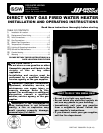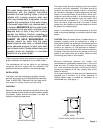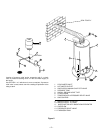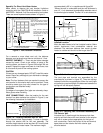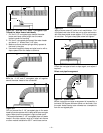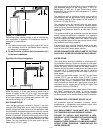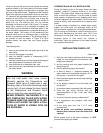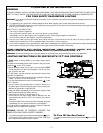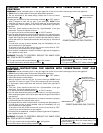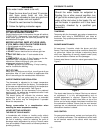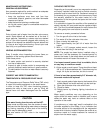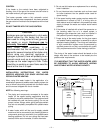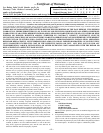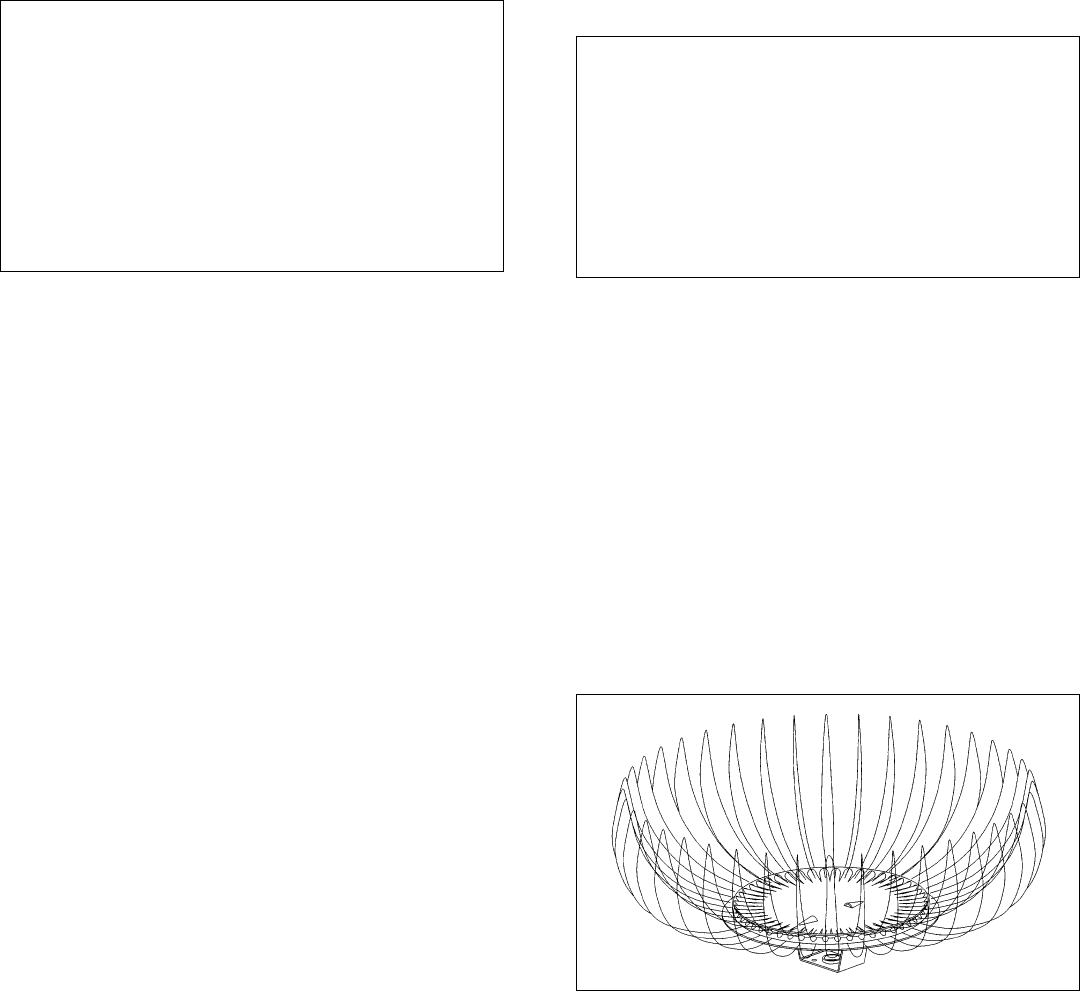
– 9 –
WARNING
If the water heater needs to be relit;
1. Open the inner door for at least 10 minutes
and force some fresh air into the
combustion chamber to clear any gas from
the water heater and vent system.
2 Check the vent terminal for blockage.
3. Follow the lighting instruction again.
WATER TEMPERATURE REGULATION
The thermostat is adjusted to its lowest temperature
position when shipped from the factory. The temperature
of the water can be selected by setting of the temperature
dial on the top of the gas control. See Figure 4.
The “LOW” position on the thermostat is the preferred
starting point for setting the temperature/control knob
(approximately 120°F (50°C)).
The lowest setting will maintain the minimum water
temperature if you are going away for an extended
period. The burner may be extinguished if operated
below this temperature.
Energy conservation is a consideration when
selecting the water temperature setting.
HIGHER SETTING INCREASES
THE RISK OF SCALD INJURY
In households with children or invalids and/or elderly
persons, select a lower temperature setting. To reduce
the risk of scalding, valves for reducing the point of
discharge water temperature by mixing in branch water
lines are available. Please consult a licensed plumber or
plumbing authority.
IMPORTANT
Should the water heater be subjected to
flooding, fire, or other unusual condition, turn
off gas at the manual gas shut-off valve and
water at the inlet valve to the heater. Do not
put the heater in operation until it has been
thoroughly checked by a qualified gas
technician.
TAMPERING
Tampering with the thermostat, gas valve or temperature
pressure relief valve is DANGEROUS and voids all
warranties. Only qualified personnel should service these
components.
BURNER MAINTENANCE
At least every 3 months, check the burner and pilot
flames. The burner flames must be a soft blue flame with
no yellow tips. Yellow tips indicate a carburizing flame
which can, depending on severity, deposit carbon (soot)
on the combustion chamber and flue passages.
A sheet metal burner is used on natural gas models. See
Figure 5.
Figure 5
The sheet metal burner for Natural Gas has no external
air adjustment. It is fully self-compensating and no
outside adjustment is required. Observe the flame
pattern. Ensure that no debris has fallen on top of the
burner and no foreign objects have been introduced into
the combustion chamber. Ensure that the vent terminal
openings are not obstructed and the inner door to the
combustion chamber is closed.
GAS CONTROL
For gas control replacement, contact your local gas utility,
or a qualified serviceman. The replacement control must
be an identical model to the control which has been
removed.
EXPOSURE TO WATER
SPECIAL NOTE ON PROPANE FUEL:
L.P. GAS IS HEAVIER THAN AIR
Should there be a leak in the system, the gas will settle at
FLOOR LEVEL. Basements, crawl spaces, closets and
areas below ground level will serve as pockets for the
accumulation of the gas.
BEFORE LIGHTING, SNIFF AT FLOOR LEVEL.
IF YOU SMELL GAS, FOLLOW THESE RULES.
1. Get all people out of the building.
2. DO NOT light matches.
3. DO NOT touch electrical switches (on or off).
4. DO NOT use an electrical fan to remove gas from
area.
5. SHUT OFF GAS at the L.P. tank outside of the
building.
6. IMMEDIATELY call the L.P. Gas Company or the fire
department from a neighbor’s phone. Ask for
instructions. Before hanging up, give your name,
address and telephone number.
7. DO NOT go back into the building. If help is coming,
wait for it outside the building.
OUT OF FUEL
When your L.P. tank runs out of fuel, turn off gas at all gas
appliances. After L.P. tank is refilled, all appliances must
be re-lit according to the manufacturers instructions.



